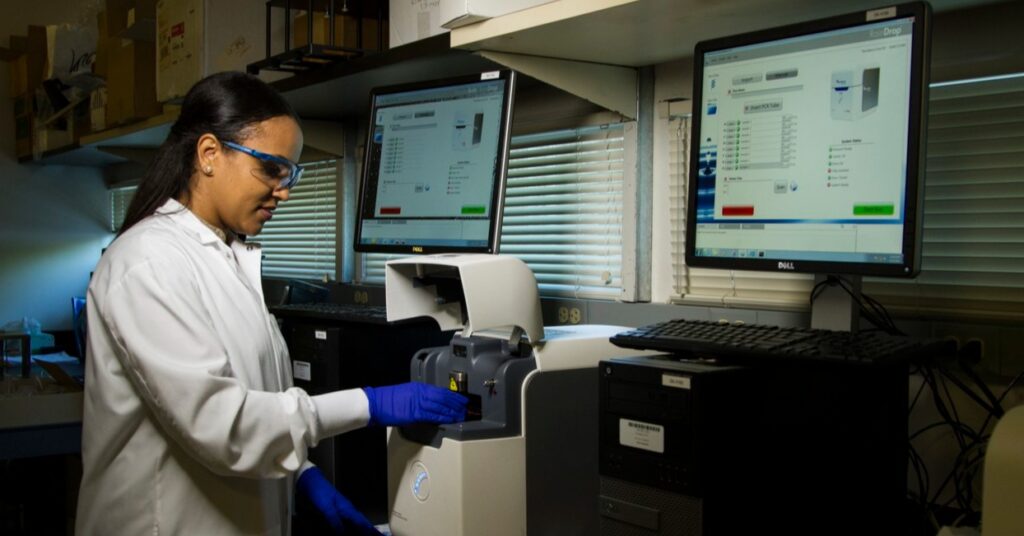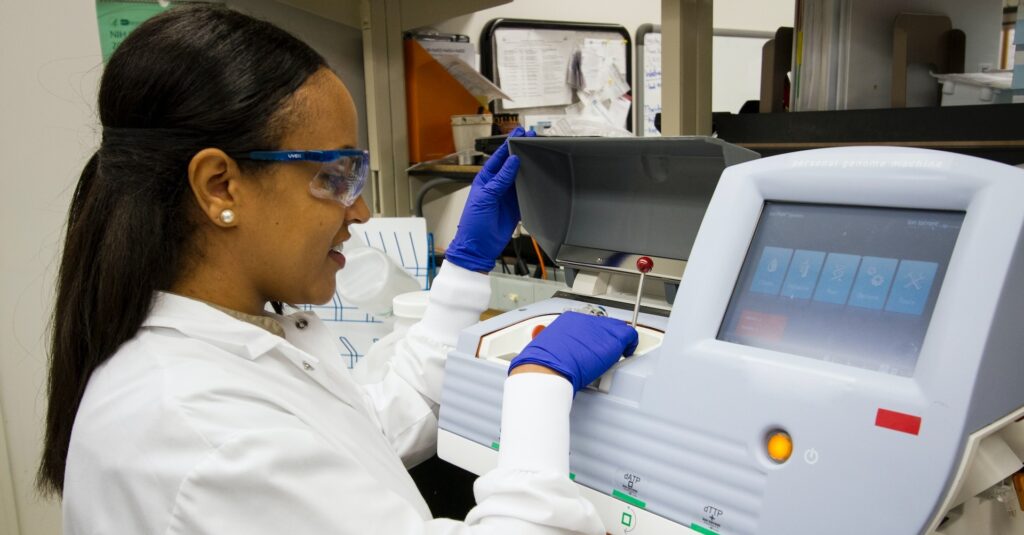
What Is the Epidemiological Triangle?
The epidemiological triad or triangle is an organized methodology used [...]
![Doctor of Physical Therapy Curriculum [Courses, Specializations, Placements]](https://resources.noodle.com/wp-content/uploads/2023/11/pexels-shotpot-4046704-1024x536.jpg)
If we go back just a few years, the thought of applying to a Doctor of Physical Therapy (DPT) program may not yet have crossed your mind. That’s because other paths to a physical therapy career were still available.
That’s no longer the case. The American Physical Therapy Association (APTA) changed the education requirements for PT clinical practice in 2000, deciding that a physical therapy doctorate would become the entry-level degree for licensure beginning in 2020. In addition, any program offering the DPT must meet rigorous requirements determined by the Commission on Accreditation in Physical Therapy Education (CAPTE), ensuring that the DPT curriculum and clinical placements meet baseline standards.
As a result, today you need a DPT to become a physical therapy practitioner. So, what will you learn in a Doctor of Physical Therapy program? In this article, we’ll walk you through the standard Doctor of Physical Therapy curriculum, reviewing coursework and clinical residency. We’ll also discuss how these lead to becoming a physical therapist. We’ll touch on:
A physical therapist can be critical to a patient’s regaining movement and independence, managing pain, and healing injuries properly. The process of working with patients takes skill; it also requires patience, empathy, and commitment.
Board-certified geriatric physical therapist Morgan Nolte told US News and World Report, “You have to be able to connect with people, talk to people and exhibit a true interest in helping others. Community service and leadership experience can help you further stand out from the crowd.” To develop doctors with this skill set, today’s top programs for aspiring physical therapists promote a holistic approach to care. They train students in everything from diagnostics to empathetic bedside manner. Early semesters cover basic anatomy, health sciences, and modern treatments; later on, students delve further into things like clinical sciences, neuroscience, and interprofessional care.
What type of coursework can you expect on your class schedule? Like many doctoral programs, you’ll encounter foundational courses, as well as a long list of electives.
Common DPT course subjects include:
In addition to focusing on specific populations (such as pediatrics and geriatrics), students can specialize in areas like:
By the final two terms, a student’s educational experience shifts toward full-time clinical work. At the University of Pittsburgh, DPT students complete a minimum of 42 weeks of clinical placement. Other programs, such as the one at Duke University, also require a culminating capstone project to showcase their studies in the field.
More students undertake remote learning programs every year. Students need the flexibility to work around their own schedules and from where they live; top universities have taken note. But how does a Doctor of Physical Therapy program—one that requires so much hands-on learning—function online?
For remote learners, schools like University of Pittsburgh created a nearly identical course of study to their in-person version, but in a hybrid format. The curriculum is the same—both on-campus and hybrid/remote students:
The major difference is that hybrid students opt for remote instruction. While the course descriptions and content are the same, the school provides remote students with a course of study that is both synchronous (e.g., logging on for a Zoom class from their home at a specific time during the week) and asynchronous (e.g., digesting content and doing assignments at their own pace each week).
Labs work differently as well. Hybrid students complete the majority of labs at home, but come to campus two times a semester during the first five terms. These immersions last 6–9 days and offer the chance for in-person collaboration, so students have the opportunity to get to know their cohort peers.
The majority of DPT programs take somewhere between two and three years to complete, but this varies depending on hybrid learning and clinical experience options.
The best part about this time frame? Unlike an MD or PhD, you don’t need a master’s degree as a precursor to start your physical therapy doctorate. So, students can expect to finish their education requirement for licensure in just around six or seven years.
APTA works hard for its aspiring physical therapists. In addition to laying out the prerequisites for DPT programs, it also offers what is known as the Physical Therapist Centralized Application Service. Not all universities accept the common application, but the site can still walk you through common admissions questions.
When applying for DPT, expect the following requirements:
Be sure to note that most programs have a prerequisite list of completed courses for admission, many of which build a foundation for the standard DPT coursework. Some programs will admit you conditionally without this coursework but will require you to complete it prior to commencing DPT studies.
Sure, becoming a physical therapist is already a specialized career path. But professionals have the option to focus on specific age groups, professionals, or those suffering from unique illnesses. All DPT programs encourage their students to tailor their electives and clinical studies to their unique interests and career goals. Let’s take a look at the most common PT specializations.
Patients recovering in the hospital can regain essential movements after major surgery or illness. An acute physical therapist provides bedside exercises to ease the transition back to home living.
Physical therapist exercises, devices, and daily patient care play a major role in stroke recovery and other neurological diseases. These specialists have an in-depth understanding of mobility and its relation to the nervous system.
Students can focus their studies on increasing a patient’s lifespan with cardiovascular and pulmonary-strengthening exercises. This approach helps patients with everything from chronic bronchitis to the effects of a heart attack.
These PTs work with the large population of aging adults in the US, ensuring each client maintains the balance, strength, and range of motion for an independent lifestyle.
When patients make the transition from recovery to rehabilitation, an occupational therapist helps them reacquire the physical skills needed for their activities of daily living. Experts also address the design of a person’s home and how their daily routine can be completed safely.
Both cancer and its treatments require therapies for pain, weakness, and stiffness in the body. Oncology PT specialists understand their impact and how to support recovery.
This PT specialty focuses on the bones, muscles, and connective tissue. Doctors help patients ease pain, regain strength, and properly move through the healing process.
Children—particularly those with disabilities—greatly benefit from PT. Students can focus on the methods of working with children in a range of clinical settings.
This popular specialty helps both professional and amateur athletes enhance their performance, protect themselves from injury, and address past issues.
Some professionals, teams, and companies choose to take PT specialists on the road. This option may be ideal for doctors looking to travel and enjoy flexibility early in their careers.
A loss of balance greatly affects our quality of life. Vestibular physical therapists understand how to help a patient move past vertigo and other balance-related illnesses.
From young adulthood to post-menopause, these PT specialists focus on strength, balance, and movement issues specifically related to women’s health at all stages of life.
As APTA points out, the clinical placement is a structured residency for students to work directly in their chosen specialty. Through mentorship and observation, the program encourages students to build connections, hands-on experience, and the pathway to transition seamlessly into a career.
Pitt’s clinical program, for example, partners with major local medical centers, including the University of Pittsburgh Medical Center and UPMC Centers for Rehab Services. The university takes extra care to place hybrid students within a 60-mile radius of their homes.
While the average PT salary is around $90,000 a year, PT professionals must be truly dedicated to and passionate about their specialty to build a lifelong career. There’s no question that, despite the good pay, this job involves a proportionately high number of daily stressors, both physically and mentally—which is why PT clinical education offers students a glimpse into the rigors of being a physical therapist. DPT programs want their students to be fully prepared to embark on their careers as caring and successful physical therapists.
Questions or feedback? Email editor@noodle.com

The epidemiological triad or triangle is an organized methodology used [...]

A family nurse practitioner (FNP) provides comprehensive primary health care [...]

FNPs practice in a broad range of health care settings. [...]

Some epidemiologists assist pharmaceutical companies in developing safer medicines. Some [...]

A Bachelor of Science in Nursing (BSN) is a four-year [...]
Categorized as: Physical Therapy, Nursing & Healthcare